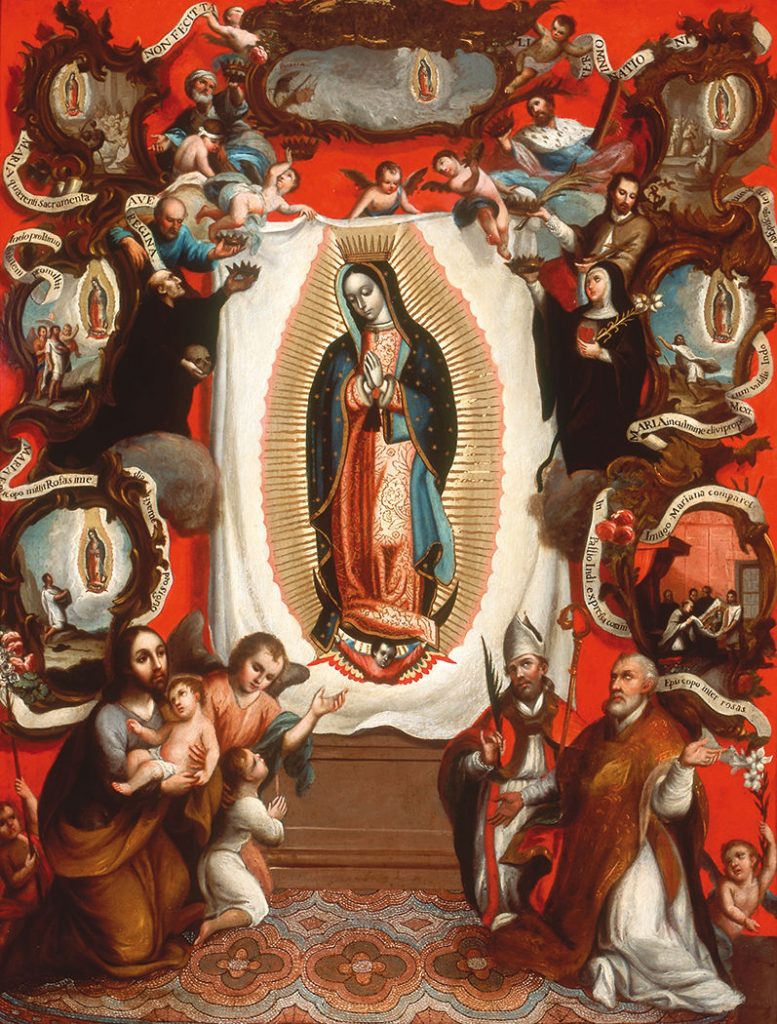Years ago, I attended a retreat led by a priest named Father Bill.
Father Bill combined high intelligence, a black sense of humor and a tender heart. He’d been educated, among other places, in Rome. He’d studied with the pope. He’d come back to Southern California and landed at a parish where he’d thought to impart some of his deep theological insights. Instead, the people kept stringing up tinsel, lights and tissue paper cutouts. Every time he turned around they were loading up the sanctuary with Sacred Heart prayer cards and plastic statues of Mary.
One day at the beach, pondering his dilemma, he set up his chair near a young father and his little girl. The father was trying to nap and the little girl would bring her pail down to the water, fill it with shells and, staggering under its weight, bring it back. “Daddy, Daddy! Look!” The father would open one eye, say “That’s nice, honey” and roll over on his other side. The little girl would totter back to the shoreline, fill her empty pail with shells, and drag it back: “Daddy! Daddy!”
Suddenly Father Bill realized this little girl was like the Latinos at his church. They wanted to throw a party for the Father they loved! They wanted to shower Him with trinkets and gifts!
He heard a “voice” saying, “If I want to change the Church, Bill, I’ll do it.”
To be a Catholic in L.A. is to live at the very center of such exuberance. To worship among people who know to spend their last pennies on a bunch of paper flowers; who seem always able to make room for one more child; who think to commemorate with a wooden cross the place on the desert highway where someone has died has been a great and ongoing gift.
In 1531, the story goes, the mother of Christ appeared to an Indian convert named Juan Diego, leaving her portrait on Juan Diego’s mantle (tilma, in Spanish). The tilma, now a treasured relic, is housed at the Basilica of Our Lady of Guadalupe in Mexico City, the most visited shrine in the world.
Through Jan. 29, the Bowers Museum in Santa Ana is featuring an exhibit called “Virgin of Guadalupe: Images in Colonial Mexico.”
A documentary describes the way various aspects of the tilma have stymied scientists: the fragile agave fibers that have miraculously survived intact for centuries, the colors that have remained as bright as they were the day the Virgin painted them, the chemical composition of the pigments. The stars in the Virgin’s cloak mirror the constellations. Allowing for the subsequent change from the Julian to the Gregorian calendar, the Virgin actually appeared in 1531 on the winter solstice.
The exhibit is divided into four sections depicting how beautiful that Mary, ever humble, appeared to an unknown farmer, how beautiful that she filled Juan Diego’s coarse-fibered tilma with an armful of out-of-season roses: a sign of Christ’s love, showered back to a people who have so profligately showered theirs upon him.
All around Southern California on Dec. 12 will be pageants, Masses and statues of the Virgin, in her blue, star-studded mantle, held aloft. All around, the ground littered with tinsel, voices will be raised in song to “La Guadalupana,” “La Paloma Blanca,” “La Magnifica.”
May the strains waft up, God rest his soul, to Father Bill.
Heather King is a blogger, speaker and the author of several books.

